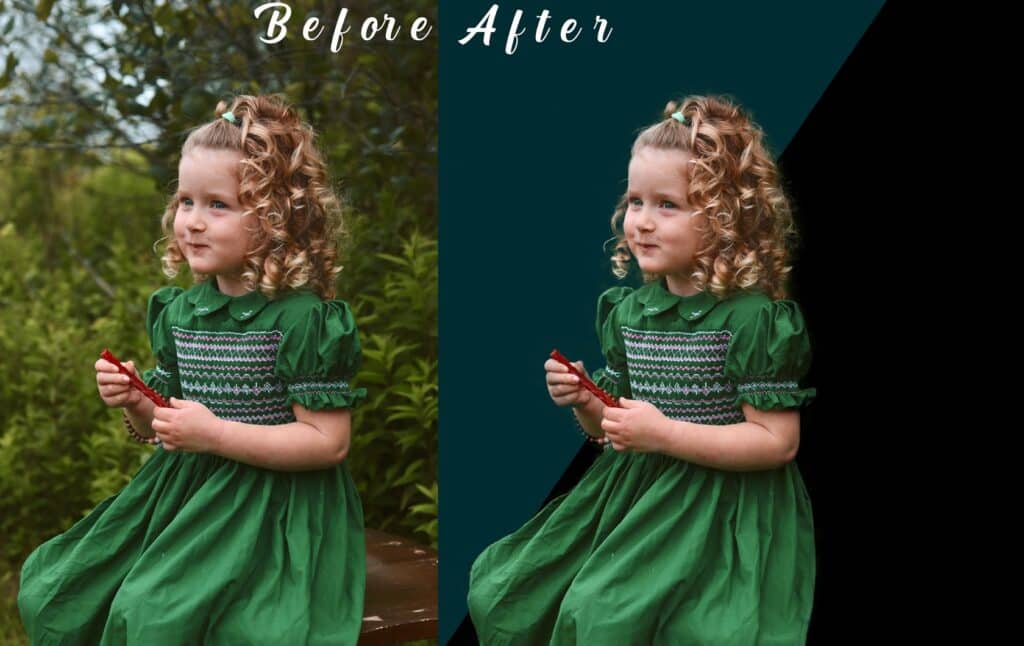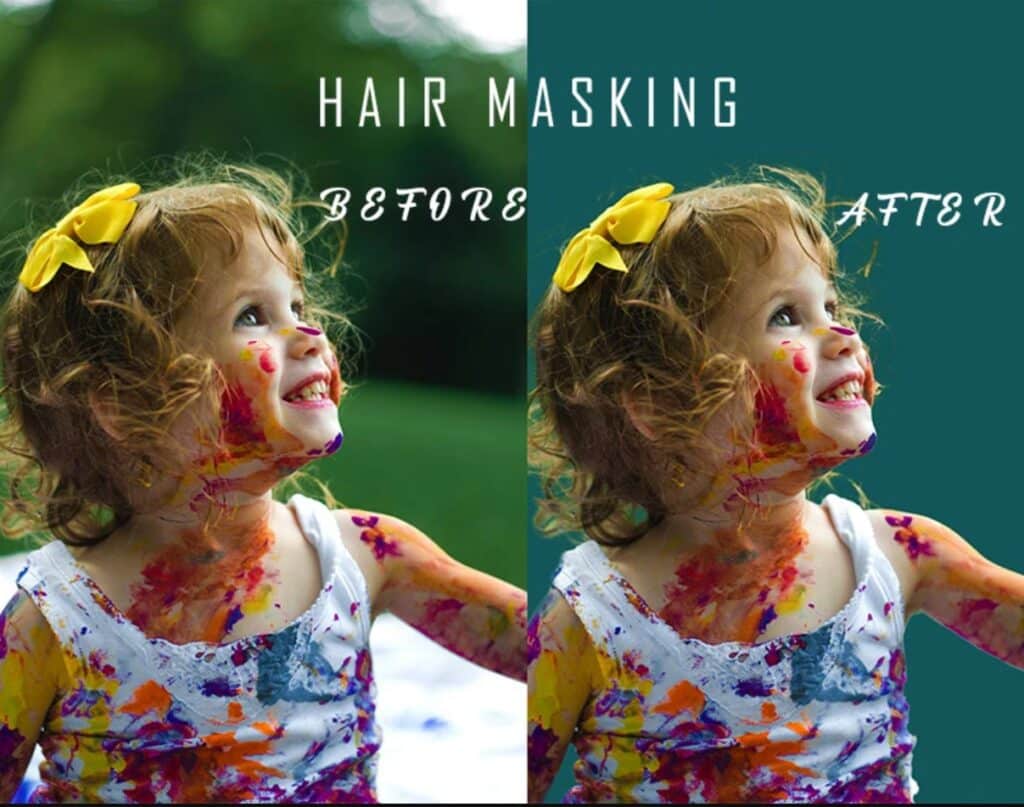When Should Image Masking be Applied in Photography?
Advanced Photography Masking Techniques, In the ever-evolving realm of photography, image masking stands out as a formidable technique, offering photographers the ability to elevate and fine-tune their images, granting them the freedom to selectively modify distinct elements within a photograph.
This piece explores the complexities of image masking, delving into the optimal scenarios and techniques for its application to enhance photographs and achieve a polished and professional appearance.
Understanding Image Masking:
Before delving into the application of image masking in photography, it’s crucial to grasp the concept itself. Image masking involves isolating and manipulating specific areas within an image, allowing for targeted adjustments. Unlike simple cropping or basic edits, masking permits fine-tuned control over elements such as exposure, color balance, and sharpness.
When to Apply Image Masking:
Complex Backgrounds:
Image masking becomes indispensable when dealing with intricate backgrounds. Whether it’s a cluttered cityscape, a dense forest, or a crowded event, applying image masking allows photographers to isolate the subject from the background, ensuring that the main focus remains sharp and undisturbed.
Fine Detailing in Portraits:
In portrait photography, image masking shines when it comes to refining fine details. It enables photographers to enhance facial features, adjust skin tones, and even experiment with background blurs without affecting the subject’s integrity.
Product Photography:
For e-commerce platforms or marketing materials, product images need to be flawless. Image masking facilitates the removal of backgrounds, enabling the insertion of different backgrounds or creating a clean, consistent look across a product line.
HDR Photography:
High Dynamic Range (HDR) photography involves capturing a wide range of light and dark areas in a single image. Image masking is instrumental in combining multiple exposures seamlessly, ensuring a balanced and visually appealing final result.
Color Correction and Grading:
When it comes to adjusting specific colors within an image, image masking provides precision. Whether it’s enhancing the blue of the sky or selectively adjusting the hues in a landscape, masking allows photographers to target and modify individual color channels.
Reflections and Glare:
Dealing with unwanted reflections or glare in photos can be challenging. Image masking helps isolate these problematic areas, allowing photographers to adjust exposure and contrast without affecting the rest of the image.

How to Apply Image Masking:
Software Selection: To implement image masking effectively, choosing the right software is crucial. Advanced software such as Adobe Photoshop provides various masking features, encompassing layer masks, vector masks, and quick masks. Familiarizing oneself with these tools is essential for mastering image masking techniques.
Layer Masks: Layer masks are a fundamental aspect of image masking in Photoshop. They allow photographers to hide or reveal portions of a layer, providing a non-destructive way to make edits. Learning to create and manipulate layer masks is a skill that significantly enhances the versatility of image masking.
Pen Tool for Precision: The Pen Tool is a precision instrument in image masking, particularly when dealing with intricate shapes. Whether it’s isolating a subject from a complex background or refining the edges of an object, the Pen Tool ensures accuracy and control.
Feathering and Refinement: Feathering is a technique that softens the edges of a mask, preventing abrupt transitions between masked and unmasked areas. This is crucial for achieving a natural and seamless look. Additionally, utilizing tools like the Refine Edge feature in Photoshop further enhances the precision of image masking.
Practice and Patience: Mastering image masking requires practice and patience. Experiment with different images, try various masking techniques, and learn from tutorials and online resources. Developing this skill gradually transforms image masking from a daunting task to a powerful ally in photography.
SEO-Friendly Tips for Image Masking in Photography:
Utilize Descriptive Alt Text: When incorporating images into a website or blog, use descriptive alt text that includes relevant keywords.
This not only makes the content more accessible for individuals with visual impairments but also boosts the search engine optimization (SEO) efficacy of the material.
Optimize Image File Names: Rename your image files with meaningful and SEO-friendly names. Avoid generic file names like “IMG_001.jpg” and instead opt for descriptive names that include relevant keywords, making it easier for search engines to understand the content.
Compress Images Without Sacrificing Quality:
Page loading speed is a crucial factor for SEO. Compress your images to reduce file sizes, but ensure that the quality remains high. Strike a balance between image optimization and visual appeal for an optimal user experience.
- Create Informative Captions: Captions provide an opportunity to include additional keywords and context. Craft informative captions that complement the image, offering valuable insights and engaging content for both readers and search engines.
- Incorporate Image Schema Markup: Implementing image schema markup helps search engines understand the content and context of your images. This can enhance the chances of your images appearing in relevant search results, driving organic traffic to your photography-related content.
- Share Before-and-After Images: If applicable, showcase the impact of image masking by sharing before-and-after images. This not only adds visual interest to your content but also highlights the transformative power of image masking in photography.

Advanced Applications of Image Masking:
Composite Photography: Image masking plays a crucial role in composite photography, where multiple images are combined to create a seamless and imaginative final composition. Whether it’s blending different elements in a surreal scene or merging subjects from separate photos, masking allows for precise integration and cohesion.
Artistic Effects: For photographers seeking to add artistic flair to their images, image masking opens up avenues for creative effects. From dreamy double exposures to ethereal overlays, masking empowers artists to experiment and push the boundaries of traditional photography.
Panoramic Photography: Creating panoramic images often involves stitching together multiple photos.
Image masking plays a crucial role in achieving a seamless integration of image edges, facilitating a fluid transition between frames and resulting in a panoramic composition that presents itself as a unified and cohesive image.
- Selective Sharpening and Blurring: Image masking allows for selective sharpening or blurring of specific areas within a photo.
These applications utilize advanced machine learning techniques to streamline the masking procedure, providing a more user-friendly and effective solution for photographers, particularly those with minimal editing expertise.
- Time-Lapse Photography:When compiling images for time-lapse sequences, maintaining consistency is essential. Image masking aids in ensuring a consistent look across frames, allowing photographers to apply adjustments to specific elements without affecting the entire sequence.
Troubleshooting Common Image Masking Challenges:
Dealing with Hair and Fur: Achieving realistic and precise masking around intricate details such as hair or fur can be challenging. Utilize tools like the Refine Edge Brush in Photoshop to meticulously refine the mask, ensuring a natural and seamless integration with the background.
Handling Translucent Objects: Transparent or semi-transparent objects, like glass or water, present unique challenges in image masking. Employ advanced masking techniques such as color range selection and layer blending modes to effectively capture the transparency and translucency of these elements.
Balancing Shadows and Highlights: When masking objects with varying degrees of shadows and highlights, maintaining a harmonious balance is crucial. Adjust the opacity of the mask, utilize feathering techniques, and make use of layer blending modes to seamlessly integrate masked elements with the overall lighting in the image.
VII. Industry Insights and Trends:
- Rise in AI-Powered Masking Tools:With the advancements in artificial intelligence, there’s a growing trend in the development of AI-powered masking tools.
These applications utilize advanced machine learning techniques to streamline the masking procedure, providing a more user-friendly and effective solution for photographers, particularly those with minimal editing expertise.
- Integration of 3D Masking Techniques:The integration of 3D masking techniques is gaining traction in the photography industry. This involves creating depth-aware masks that consider the three-dimensional aspects of a scene, allowing for more realistic and immersive editing possibilities.
- Collaboration with Graphic Designers: Collaborating with graphic designers who specialize in image manipulation and masking can bring a fresh perspective to photography projects. Designers often possess advanced skills in masking and can provide valuable insights into achieving unique and visually striking results.

Case Studies: Real-World Applications of Image Masking
To further illustrate the impact and versatility of image masking, let’s explore a few real-world case studies:
- Fashion Photography: High-end fashion photography often involves capturing models against diverse backgrounds. Image masking allows photographers to change backgrounds seamlessly, ensuring the focus remains on the clothing or accessories. This technique is widely employed in fashion catalogs, advertisements, and online retail platforms.
- Architectural Photography: Photographing buildings and architectural marvels sometimes requires removing distracting elements or adjusting lighting conditions. Image masking enables photographers to selectively enhance or manipulate specific architectural features, ensuring the final images showcase the structures in their best light.
- Wildlife Photography: In wildlife photography, capturing animals in their natural habitats can be challenging due to complex backgrounds. Image masking aids in isolating the subjects, allowing for adjustments without disturbing the authenticity of the scene. This technique is particularly valuable for conservation efforts, where highlighting the subject is crucial.
Evolving Trends in Image Masking for Photography
- Augmented Reality Integration: With the rise of augmented reality (AR) applications, image masking is increasingly being utilized to enhance the interactive and immersive elements of photographs. This trend extends to fields such as advertising, where AR-powered images can provide users with engaging and interactive brand experiences.
- Ethical Considerations: As image manipulation techniques become more sophisticated, there’s a growing awareness of the ethical implications surrounding the use of image masking. Photographers and content creators are encouraged to disclose when images have been significantly altered, fostering transparency and ethical practices in the industry.
- Cross-Platform Compatibility: With the proliferation of various digital platforms, photographers are adapting their images to suit different display sizes and resolutions.
Image masking is essential for enhancing images to ensure they appear visually appealing on various platforms, whether it’s a sizable desktop monitor or a compact mobile screen

Community Engagement and Learning Resources
- Online Photography Communities: Joining online photography communities provides opportunities to share experiences, learn new techniques, and seek advice from fellow photographers. Platforms like Instagram, Flickr, and photography forums host communities where image masking enthusiasts can connect and exchange insights.
- Educational Platforms: Take advantage of online courses and tutorials that specifically focus on image masking in photography.
Platforms like Udemy, Skillshare, and YouTube offer a diverse range of learning materials, catering to both beginners with introductory content and advanced learners through expert-led masterclasses.
- Networking with Professionals: Attend photography conferences, workshops, and networking events to connect with professionals who excel in image masking. Establishing relationships with seasoned photographers and graphic designers can open doors to mentorship and collaborative opportunities, enriching your skill set.
Future Prospects of Image Masking in Photography
- Integration with Computational Photography: The future holds exciting prospects for the integration of image masking with computational photography techniques. As smartphones and cameras incorporate advanced computational capabilities, photographers can expect more intelligent and automated masking features that enhance the overall photographic experience.
- Accessibility and User-Friendly Tools: The trend towards user-friendly interfaces and tools is likely to continue, making image masking more accessible to a broader audience. As software developers strive to simplify complex processes, photographers can anticipate more intuitive and efficient masking tools that streamline the editing workflow.
Final Thoughts
Image masking is not just a technical skill; it’s a transformative tool that empowers photographers to bring their creative visions to life. As technology advances and the photography landscape evolves, staying informed about the latest trends, tools, and ethical considerations is essential for photographers looking to elevate their craft.
Embrace image masking as a dynamic and integral part of your photography toolkit.
Explore novel approaches, glean insights from the journeys of fellow enthusiasts, and adjust to the dynamic realm of digital imagery.
Whether you’re a seasoned professional or an aspiring enthusiast, the journey of mastering image masking is an ongoing and rewarding exploration of the limitless possibilities within the realm of photography.

